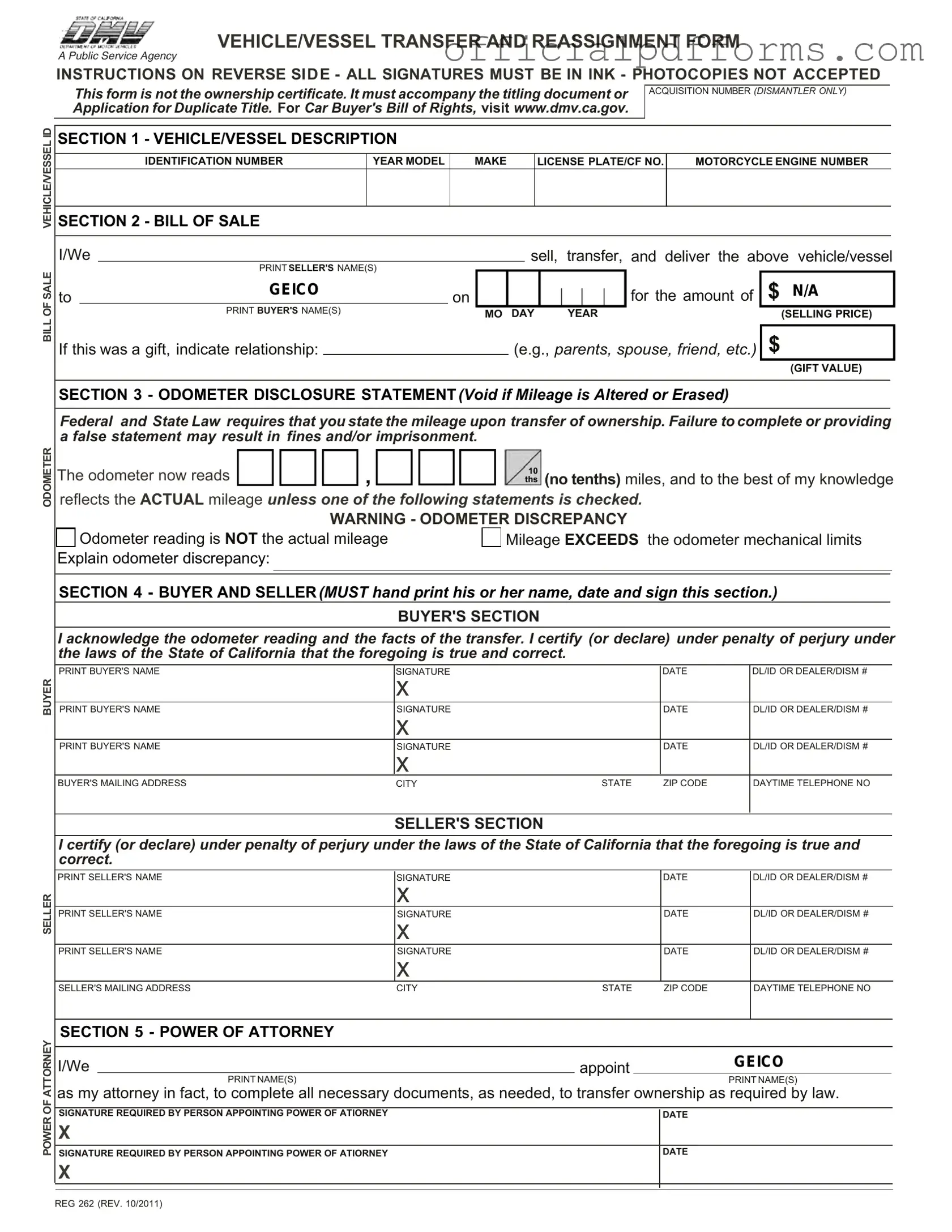Fill in a Valid California Fotm Reg 262 Form
The California Form REG 262 is a Vehicle/Vessel Transfer and Reassignment Form that plays a crucial role in the transfer of ownership for vehicles and vessels in the state. This form must accompany the title or an application for a duplicate title, ensuring that all necessary information is documented properly. If you're looking to transfer ownership, make sure to fill out this form by clicking the button below.
Access Form Online
